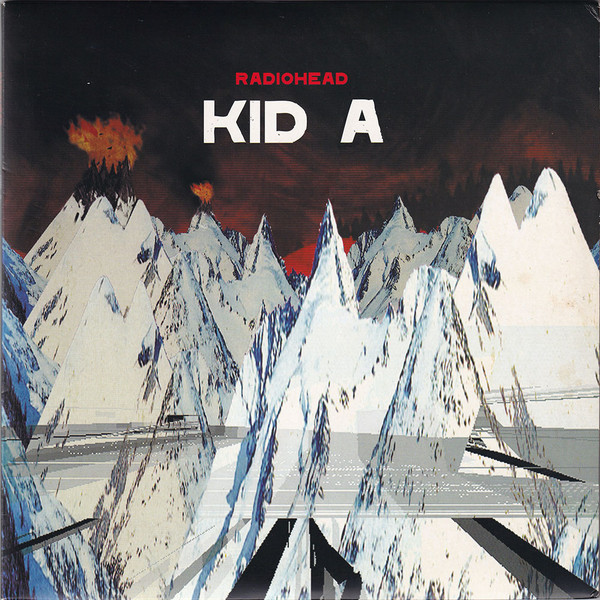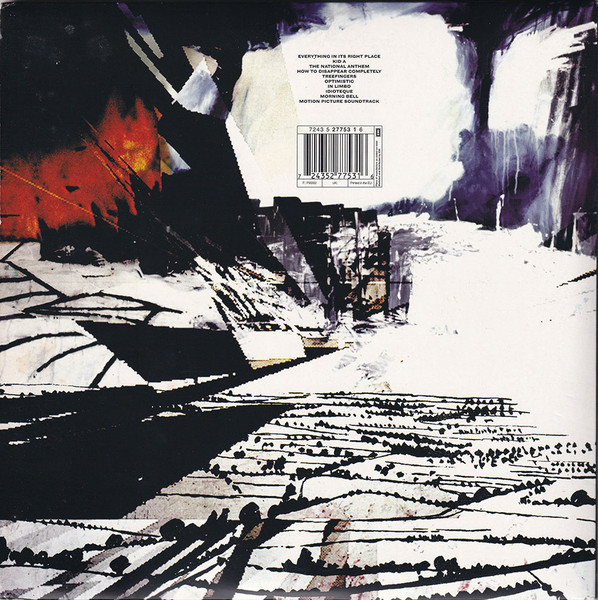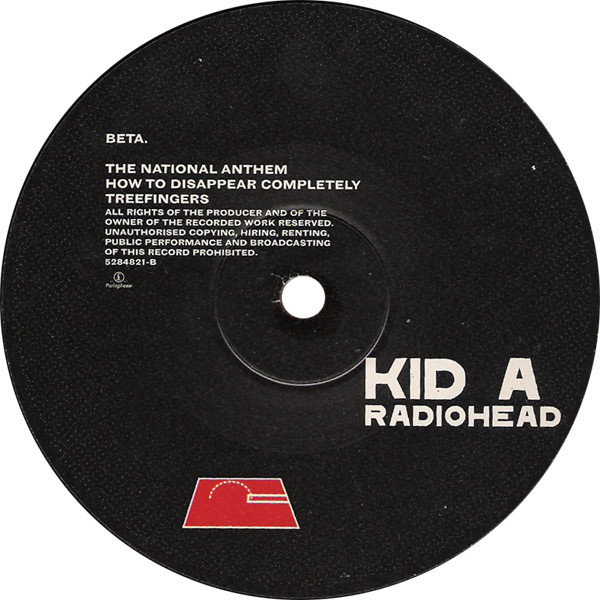
100 Best Albums In three albums released over the course of four years, Radiohead had done the unlikely: They had gone from potential one-hit wonders cresting a wave of reverent rock to a more atmospheric version of such to a band that then broke many of those rules and reconfigured the lexicon on 1997’s OK Computer. So, what was a band suddenly touted for making “the best record of all time” to do, aside from tour until they were threadbare as was Radiohead’s wont? They were, with some stress and shouting and madness, going to throw away the rules altogether. In turn, Kid A became their second revolutionary act in as many records.
Thom Yorke had begun to resist the idea that he was in a rock band at all, that Radiohead instead was rather an expressive outlet in search of the best way to say something. He found, though, that he had nothing to say, that every idea for a song was better suited for the trash. He went on long walks in the English rain and prowled around old buildings, listening to the vertiginous electronic vanguard of, say, Aphex Twin and Autrechre. New ideas began to emerge, as did new equipment in their Oxford studio—modular synths, samplers, a haunted theremin contemporary called the ondes Martenot.
Kid A did not introduce these intentions slowly. With its seasick sequences and Yorke’s multiplied vocal lines folding in and over and around one another like an Escher sketch, “Everything In Its Right Place” is both taunt and gambit, a little wink from the band that had gone from “Creep” to these so-called creepy sounds. That was simply the start. “Idioteque” brazenly subverted dance-floor tropes, not only with drums so blown out they suggested a bullet’s report, but also Yorke’s purred lines about Cold War anxiety. If the acoustic strums, distant hums and rising rhythm of “How to Disappear Completely” at least suggested something recognisable for those with The Bends, its chaser, “Treefingers”, ferried it away with a dimly phosphorescent electronic ripple, as if the sun had forever set just below the horizon.
The demented bass and howling horns of “The National Anthem”, the harp sweeps and operatic tremors of “Motion Picture Soundtrack”, the refracted guitars and babbling circuity of “In Limbo”: Radiohead found new space to explore on every Kid A track. Each song, though, was anchored to a hook—however hidden it first appeared—something familiar as the band set off into often-unfamiliar spaces.
Popular and critical opinion about Kid A was initially mixed. Had Yorke finally teetered off the edge? Were they a bunch of scene-hopping poseurs? But as people found those melodies and made their own meanings from its mondegreens, they understood that Radiohead not only meant this new avenue of expression but also needed it. This was a new arena for old blues, fit for the 21st century—and helping shape it, too.
Tracklisting
| Position | Title |
|---|---|
| Alpha | |
| A1 | Everything In Its Right Place |
| A2 | Kid A |
| Beta | |
| B1 | The National Anthem |
| B2 | How To Disappear Completely |
| B3 | Treefingers |
| Gamma | |
| C1 | Optimistic |
| C2 | In Limbo |
| Delta | |
| D1 | Idioteque |
| D2 | Morning Bell |
| D3 | Motion Picture Soundtrack |
| D4 | Untitled |
Apple Music
Release Images
Release Information
| Key | Value |
|---|---|
| Wikipedia URL | https://en.wikipedia.org/wiki/Kid_A |
| Format | 2× Vinyl 10", 33 ⅓ RPM, Album |
| Label | Parlophone |
| Catalog Number | 7243 5 27753 1 6 |
| Notes | The track ‘Idioteque’ contains two samples from the Oddyssey label title First Recordings - [r=121406](1976). The two compositions samples are Paul Lansky’s ‘Mild Und Liese’ [recte ‘Mild Und Leise’] Published by Grim Tim Music and ‘Short Piece’ by Arthur Kreiger Published by The Subito Music Corporation. Both samples are used with the kind permission of the composers and The Sony Music Corporation. Side Delta contains a short unmentioned outro after ‘Motion Picture Soundtrack’, separated by a locked groove. Comes in a matte gatefold sleeve with printed inner sleeves. Printed In The EU [jacket rear] Made In EU [labels] |
| Discogs URL | Radiohead - Kid A |






